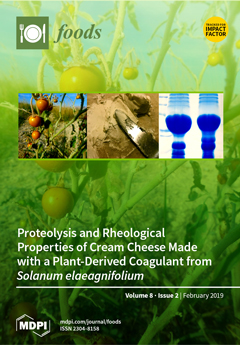Lysozyme is in high demand due to its many favorable characteristics such as being naturally occurring, non-toxic, and easy to digest and absorb. Recently, superparamagnetic nanoparticles with strong magnetic responsiveness have attracted significant interest for enzyme purification. The aptamer of the enzyme can
[...] Read more.
Lysozyme is in high demand due to its many favorable characteristics such as being naturally occurring, non-toxic, and easy to digest and absorb. Recently, superparamagnetic nanoparticles with strong magnetic responsiveness have attracted significant interest for enzyme purification. The aptamer of the enzyme can be chemically synthesized rapidly at a large scale using simple and low-cost preparation methods. Therefore, Fe
3O
4 nanoparticles (Fe
3O
4 NPs) were prepared by chemical co-precipitation and were then functionalized with amino groups to produce NH
2-Fe
3O
4 NPs. The specific reaction of aldehyde and amino groups was used to attach lysozyme aptamers with specific sequences to NH
2-Fe
3O
4 NPs to produce Apt-NH
2-Fe
3O
4 NPs. The synthesized materials were characterized using transmission electron microscopy (TEM), X-ray diffraction (XRD), Fourier transform infrared spectroscopy (FTIR), hysteresis loop analysis, and thermogravimetric analysis (TGA). The optimal experimental conditions for adsorption of lysozyme were investigated. The effects of initial lysozyme concentration, adsorption time, pH, reaction temperature, and ionic strength were determined. The maximum adsorption capacity and relevant activity of Apt-NH
2-Fe
3O
4 NPs was 460 mg·g
−1 and 16,412 ± 55 U·mg
−1 in an aqueous lysozyme solution. In addition, as demonstrated by sodium dodecyl sulfate-polyacrylamide gel electrophoresis (SDS-PAGE) electrophoresis analysis, lysozyme could be separated from crude fresh egg white using Apt-NH
2-Fe
3O
4 NPs with an amount up to 113 ± 4.2 mg·g
−1 and an activity up to 16,370 ± 46 U·mg
−1.
Full article






